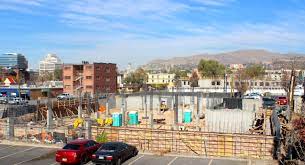Taking on a concrete services Denver job on your own is a big undertaking, but it’s achievable if you have the necessary materials. If this is your first concrete job, you may be wondering if it is preferable to pour concrete in the winter or summer. Let’s look at it more closely.
A Denver Concrete Contractors project includes four main phases: planning, mixing, pouring, and curing. The curing phase is the part of the process that is most impacted by the weather. While you may influence the curing process to some extent, it’s often easier (and less expensive) to arrange your job around the weather.
The optimal temperature for pouring fresh concrete is between 40 and 60 degrees Fahrenheit. It’s vital to remember that the ambient temperature must not only be in that range when the concrete is poured but must also be maintained while the concrete cures. That’s why pouring concrete during seasons with frequent temperature changes can be difficult.
Of course, you may not always have the luxury of waiting until the next season to complete your job. There are multiple successful ways of pouring concrete in various temperatures, so don’t worry. Visit us
Concrete In The Summer
If you live in a hot climate or have to pour concrete in the summer, there are a few fundamental considerations to keep in mind. If you operate in an environment that is hotter than 77 degrees Fahrenheit, these guidelines are critical.
The first and most crucial step is to provide shade to the area where you will be pouring concrete. A simple tarp is a cost-effective and efficient option. You may lower the temperature of your concrete by more than 10 degrees Fahrenheit by keeping it in the shade.
If it’s really hot outside, you might want to consider mixing your concrete solution with cold water. It’s also a good idea to moisten the area where you’ll be pouring the concrete with cold water before you start.
Concrete In The Winter
When it comes to effective concrete projects, colder weather is a little trickier than warmer ones. This is because concrete cannot be set if the ground surrounding it is frozen.
By keeping the mix in a dry location and selecting a concrete mix that is particularly suited for curing in a colder environment, you may help concrete stay warm. It’s also crucial to use hot water while putting your concrete solution together.
If it’s really cold outside, you may need to be inventive and use space heaters to warm the ground surrounding the area where you’ll be pouring concrete. You might cover the area with plastic once the concrete is poured to prevent the heat from escaping.
If you are adequately prepared for the weather, you can pour concrete in any season. It’s crucial to do your homework before pouring any concrete, and it’s also a good idea to get expert advice if you have any worries.
